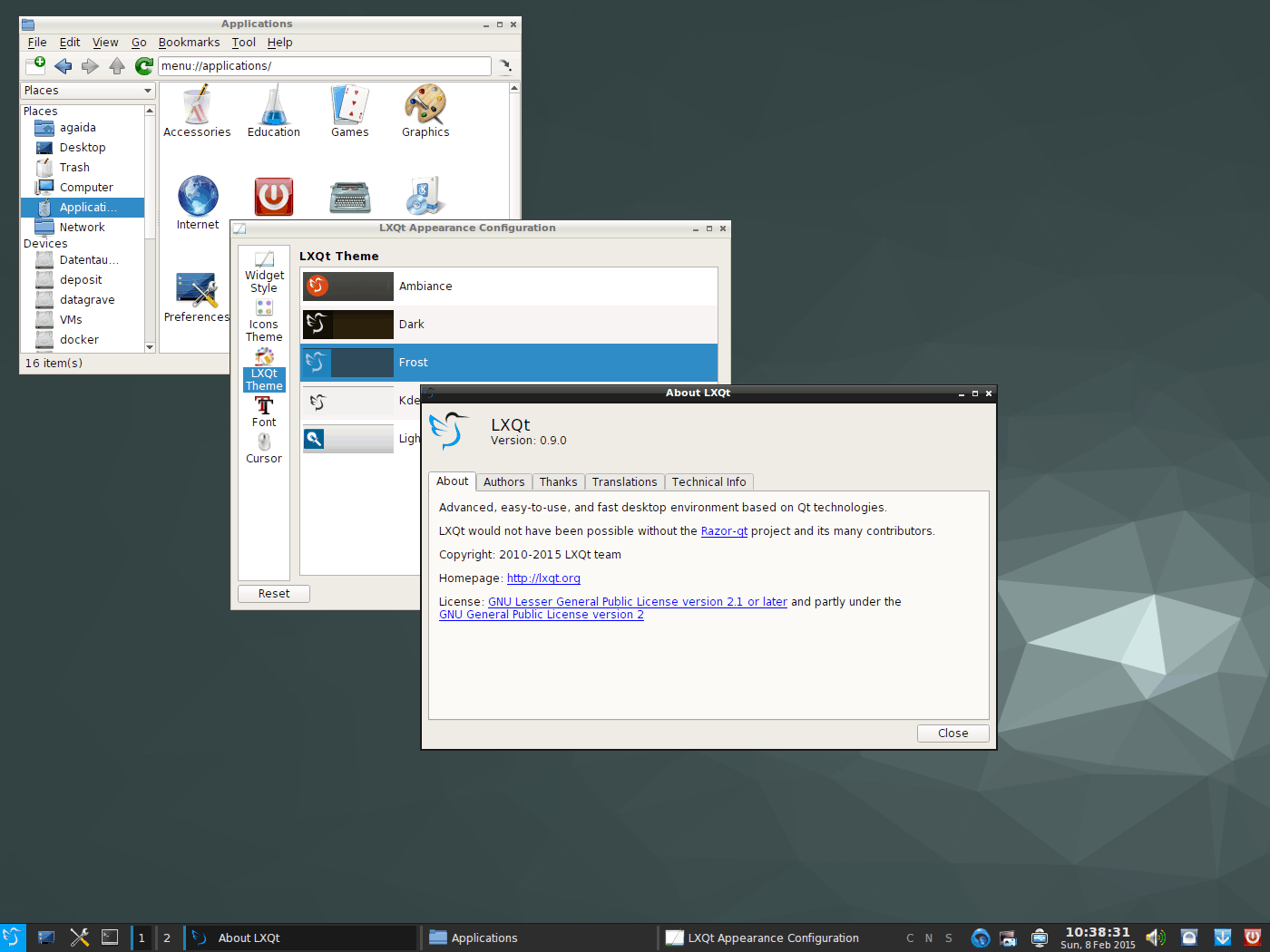Sick of re-setting up your LXQt desktop atmosphere each time you put in it? As an alternative of sitting at all your computer systems taking time re-customizing your desktop, it is perhaps a good suggestion to again up the LXQt desktop settings. That manner, the following time it’s essential re-setup your LXQt atmosphere, it occurs in a matter of minutes, moderately than hours.
SPOILER ALERT: Scroll down and watch the video tutorial on the finish of this text.
Back Up LXQt Desktop Settings

Should you’re making an attempt to protect your LXQt desktop settings, you’ll must create a whole backup of your ~/.config folder. When backing up this folder, it’s finest to compress it to a TarGZ archive.
To begin the backup, open up a terminal and use the tar command to create a brand new archive. Be certain additionally to make use of the “p” swap. Utilizing “p” swap will help you protect the entire permissions of every part within the ~/.config folder.
Notice: shut any applications, together with issues like FireFox and Chrome when operating this backup, as it could have an effect on the compression course of.
tar -cvpf config-folder-backup.tar.gz ~/.config
Your information is backed up in a TarGZ archive. Be happy to add the config-folder-backup.tar.gz file to Google Drive, Dropbox, Microsoft OneDrive, and many others.
Encrypt Backups
Encrypting desktop environments normally isn’t crucial. On this case, it’s not a required step, although customers ought to nonetheless contemplate it. Why? We haven’t backed up LXQt’s config recordsdata on their very own. As an alternative, we’ve created a backup of the default configuration folder, which holds delicate information (like browser data, software data and probably even passwords).
The quickest option to encrypt recordsdata and folders on Linux is with GPG. Launch a terminal window and observe the directions beneath to discover ways to set up it.
Ubuntu
sudo apt set up gpg
Debian
sudo apt-get set up gpg
Arch Linux
sudo pacman -S gnupg
Fedora
sudo dnf set up gpg
OpenSUSE
sudo zypper set up gpg
Generic Linux
GPG has assist on all Linux distributions in some type. To set up it in your OS, search your package deal supervisor for “gpg” or “GnuPG.” Can’t discover it? Test the Pkgs.org web site for a downloadable binary file.
Make a backup up of config-folder-backup.tar.gz by operating gpg with the “c” swap.
gpg -c config-folder-backup.tar.gz
Within the terminal, enter a secure password. If the encryption is profitable, config-folder-backup.tar.gz.gpg will seem in your house folder. End up the encryption course of by eradicating the unencrypted archive file.
rm config-folder-backup.tar.gz
End up the LXQt backup course of by importing config-folder-backup.tar.gz.gpg to a secure place on-line or in your community.
Themes And Icons
After backing up the ~/.config folder, you’ll must create a backup of your {custom} icons and themes. Should you don’t, LXQt is not going to look proper after the backup is restored.
Typically, most customers have icons arrange within the ~/.icons and ~/.themes folders, so we’ll be creating backups of these utilizing the tar command. Needless to say in case you set up your {custom} icon themes system-wide, you’ll need to again up the /usr/share/icons/ and /usr/share/themes/ as an alternative.
To begin the backup, open up a terminal and use the tar command.
tar -cvpf custom-icons.tar.gz ~/.icons tar -cvpf custom-themes.tar.gz ~/.themes
For a system-wide backup of {custom} icons and themes, run the next instructions
sudo -s cd /usr/share/ tar -cvpf custom-icons.tar.gz icons tar -cvpf custom-themes.tar.gz themes
mv *.tar.gz /house/username/
When the compression course of is full, shut the terminal and open up your file supervisor. Within the file supervisor, navigate to your private home folder and add each custom-icons.tar.gz and custom-themes.tar.gz to the cloud, or a house server for storage functions.
Restore Backup
Seize a replica of your config-folder-backup.tar.gz.gpg information and place it in ~/Downloads in your Linux PC. When that’s taken care of, place the custom-icons.tar.gz and custom-themes.tar.gz recordsdata there as nicely. After the entire TarGZ archive recordsdata are in place, launch a terminal window and use the CD command.
cd ~/Downloads
Decrypt your config-folder-backup.tar.gz.gpg file utilizing the gpg command.
gpg config-folder-backup.tar.gz.gpg
Utilizing the tar command, extract the contents of the decrypted config-folder-backup.tar.gz archive to the house listing.
tar --extract --file config-folder-backup.tar.gz -C ~/ --strip-components=2
After restoring your configuration recordsdata, extract each the icon and theme archive recordsdata with tar.
Restore icons and themes for single customers
tar --extract --file custom-icons.tar.gz -C ~/ --strip-components=2 tar --extract --file custom-themes.tar.gz -C ~/ --strip-components=2
Restore icons and themes system-wide
sudo tar --extract --file custom-icons.tar.gz -C /usr/share/ --strip-components=1 --overwrite sudo tar --extract --file custom-themes.tar.gz -C /usr/share/ --strip-components=1 --overwrite
Now that the {custom} icons and themes are in place, restoration is full. End up by restarting your Linux PC. Whenever you log again in, LXQt ought to look as if nothing occurred.
